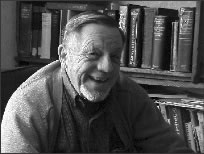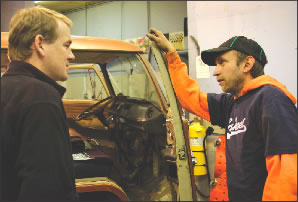by Elliot Jackson
I confess it: I am a print addict. A print junkie, if truth be told. I have been known to while away the time conning the labels on Kraft Mac & Cheese boxes, if no other reading material was available. This addiction is one among others that I inherited from my father, a man for whom the unfortunately hackneyed phrase, “a gentleman and a scholar,” might have been coined. A history scholar, to be precise, who, in his many years of teaching at the secondary and college levels, managed to inspire students with his particular combination of humor, rigor, and tartly compassionate appreciation for their pranks and growing pains.

Therefore, when the new editor of Colorado Central passed along to me the review books that he had inherited with the magazine, I fell on them like the proverbial wolf. As I pawed through the pile, a slender volume of prose, entitled Grand Mesa Country: Stories from Mesa and Delta Counties in Colorado, caught my eye. I can’t say why this particular volume was the one that most intrigued me. Perhaps it was because I was in the process of relocating from Grand Mesa Country myself, or perhaps it was because its author’s name, Abbott Fay, was the only one I recognized. In any case, I tucked this book away into my traveling bag and later on, when I was back in Paonia (one of Fay’s favorite places, as it turns out), opened it and spent an entire evening joyously neglecting pressing duties in my enchantment with the unknown histories and half-known characters that Professor Fay brought to my attention.
With this enchantment came a lively curiosity about the author. I had heard his name, and knew vaguely, that he, like my father, was a historian; that he gave lectures around the Western Slope; that he had taught at Western State and Mesa State Colleges as well as the Leadville Public School District, and that he was scheduled to give a talk at the Bill Heddles Recreation Center in Delta on March 22, my last weekend in Delta County. I wrote it in my calendar, and promised myself that I was going to take the book with me when I finally met Abbott Fay.
I then heard, only a few days after forming this intention, that Fay had suffered a stroke. A few days later, I heard that he had died in Grand Junction, on March 12. There would be no talk in Delta; there would be no chance to meet him. I felt a regret that seemed out of proportion with mere disappointment; and it is a regret that has only increased the more I have found out about him. A scholar and a storyteller, with a knack for knocking the dust off forgotten characters and lore of Colorado’s history, Fay was perhaps best known among the reading public for a book first published in 1997, I Never Knew That About Colorado, which sold, according to his website, an astonishing 24,000 copies – a gold record effort, in effect, for a small, independently-published book.
To his students and colleagues, Fay was that rara avis, the Platonic form of a teacher: the kind who inspired them with a combination of passion for his subject matter, intellect that challenged without apology or condescension, and enthusiasms that unabashedly risked eccentricity in their visionary tendencies. Fay’s involvement in 1977-78 with Western State’s National Energy Conservation Challenge is an example (covered in detail in George Sibley’s March 26, 2009 essay for The Gunnison Times). As someone who grew up in Detroit during the 1970s and witnessed the lasting devastation wrought on its economy by the oil embargo of 1973, I can only applaud Fay’s encouragement of his student body to set an example of conservation at a time when our country remained in a state of denial and myopia about its energy consumption patterns.
So, requiescat in pace, Abbott Fay, gentleman and scholar. I’ll be sure to make a donation to one of our favorite institutions, the Paonia Public Library, in your honor. And if you happen to run into my dad during your astral wanderings, give him my regards.
More information on Abbott Fay can be found at: www.abbottfay.com
Elliot Jackson currently works at libraries on both sides of the Divide, both of which feature works of Abbott Fay.

